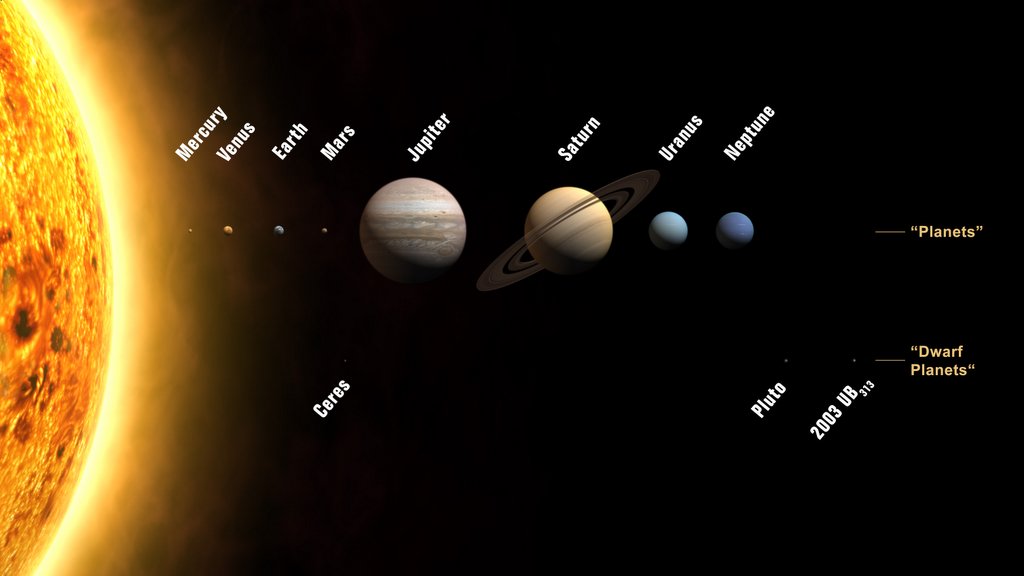NASA’s Hubble Space Telescope took this photograph of supernova remnant Cassiopeia A, one of the youngest remnants we know of in the Milky Way. The image was made up of 18 separate photos taken by Hubble using its Advanced Camera for Surveys, and it reveals the faint swirls of expanding debris. Astronomers believe the star that used to live at the centre exploded as a supernova about 340 years ago (as well as the 10,000 years it took for the light to reach us).
Continue reading “Hubble’s View of Supernova Remnant Cassiopeia A”
High Altitude Clouds on Mars
ESA scientists have discovered some extremely high altitude clouds on Mars – between 80 and 100 km (50 to 62 miles) high. These newly found clouds were uncovered by ESA’s Mars Express spacecraft, while it was watching distant stars as they passed behind Mars. The light from the stars was distorted as it passed through the Martian atmosphere, allowing scientists to measure the intervening cloud layers. The atmosphere at that altitude is so cold that scientists think the clouds must be made of carbon dioxide.
Continue reading “High Altitude Clouds on Mars”
Storm Delays Shuttle Launch
NASA has pushed back the launch of the Space Shuttle Atlantis because of Tropical Storm Ernesto, currently threatening the East Coast of the United States. The agency has made the decision to roll the shuttle back to its hanger, to protect it from potential damage from the storm. If the rollback does occur, the shuttle won’t be able to fly before its September launch window ends, so it’ll have to be pushed back to October.
Continue reading “Storm Delays Shuttle Launch”
What’s Up this Week: August 28 – September 3, 2006
Greetings, fellow SkyWatchers! Saturn returns to the morning sky and Selene is back to rule the night. Follow along this week as explore the lunar surface and find all that is bright and beautiful under the stars. Get your binoculars or telescopes ready, because…
Here’s what’s up!
Continue reading “What’s Up this Week: August 28 – September 3, 2006”
Fine Tuning the Search for Black Holes
Although black holes can’t be seen directly, they’re relatively easy to find. Matter spiraling into a black hole becomes superheated, shines brightly, and is visible across the Universe. A new supercomputer simulation has fine tuned the energy calculations for atoms in the vicinity of a black hole. This is very important, because astronomers working on black holes will base their assumptions on these atomic data. The new calculations bring the potential error rates down to a few percent, enhancing the accuracy of other research.
Continue reading “Fine Tuning the Search for Black Holes”
The Secret to Earth’s Shining Auroras
Auroras appear near to the poles when material from the Sun interacts with the Earth’s magnetic field. Now ESA’s Cluster spacecraft have helped determine exactly how energetic particles are generated that cause the atmosphere to glow so brightly. Cluster has confirmed that the interactions with the Earth’s magnetosphere cause flows of gas traveling more than 300 km/second (186 miles/second) to crash into the atmosphere, generating the light show we see.
Continue reading “The Secret to Earth’s Shining Auroras”
Did Mariner IV Pass Through a Comet’s Tail?
On July 14, 1965, NASA’s Mariner 4 made the first successful flyby of Mars; after six spacecraft had already failed to reach the Red Planet. It passed only 10,000 km (6,200 miles) above the surface of the planet, and sent back 22 pictures. Two years later it passed through an intense shower of meteoroids, more ferocious than anything we’ve seen here on Earth. Meteor expert Paul Weigert thinks the spacecraft might have passed close to comet D/Swift, and the meteoroids came from the comet’s tail.
Continue reading “Did Mariner IV Pass Through a Comet’s Tail?”
STS-115 Brings More Power to the Station
STS-115 is an ambitious mission that returns the focus of human spaceflight to building the International Space Station, bringing new capabilities to the ISS. While a song by John Lennon asserts that revolution will bring power to the people, it will be a new set of solar arrays and its ability for rotation that will provide more power to the space station.
Continue reading “STS-115 Brings More Power to the Station”
Astrophoto: Fleming’s Triangular Wisp by Steve Cannistra
Evidence of Astronomy has been found in most ancient cultures. The Egyptians, the Babylonians, the Mesopotamians, the Chinese- and in the New World- the Mayans, the Aztecs and the Anasazi all tracked the movement of stars across the heavens. Astronomy has always been a practical endeavor arising from a fundamental need to anticipate the seasons. Astronomy’s utility didn’t stop there, however. Interpreting the motion of the stars also helped the traveler in ancient and not so ancient societies- particularly those hunting far from familiar landscapes, journeying on long trading missions or sailing out at sea without landmarks. But, in each of these long ago civilizations, what became of the individuals who made the fundamental astronomical discoveries that future generations have taken for granted?
Continue reading “Astrophoto: Fleming’s Triangular Wisp by Steve Cannistra”
Pluto’s Out of the Planet Club

Last year we had 9 planets. Recently we were informed it would grow to 12. Now we’ve only got 8. The International Astronomical Union, currently meeting in Prague, voted on August 24, 2006 to demote Pluto down from planethood status. Now Pluto, Charon, Ceres and the newly discovered 2003 UB313 (aka Xena) will merely be known as “dwarf planets”. Under the new definition, planets must orbit a star, be spherical in shape, and clear out their neighbourhood of orbital debris. Pluto has failed to fulfill the third requirement, so it’s official – Pluto is not a planet.
Continue reading “Pluto’s Out of the Planet Club”
